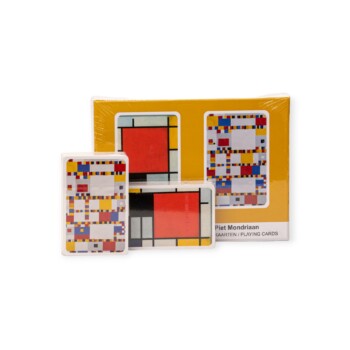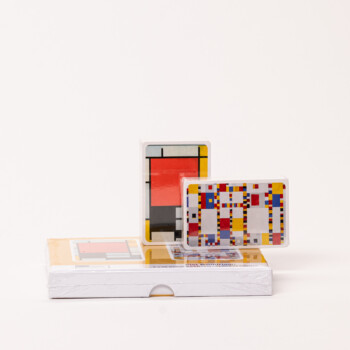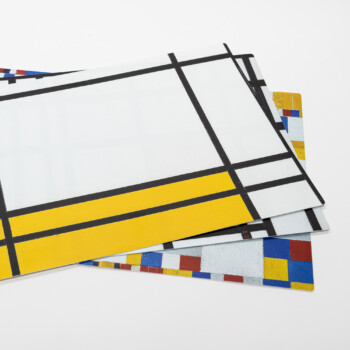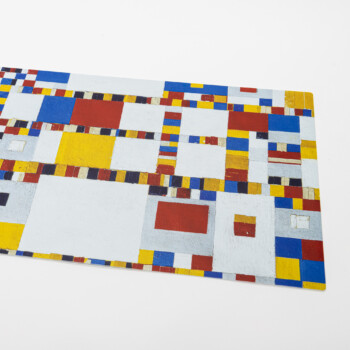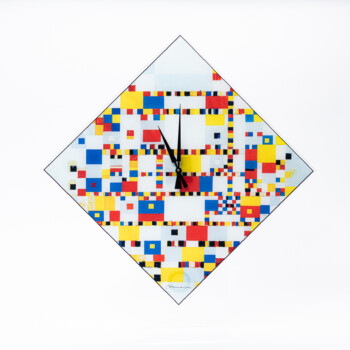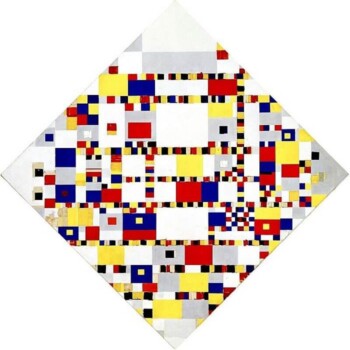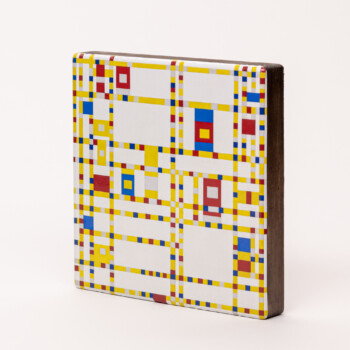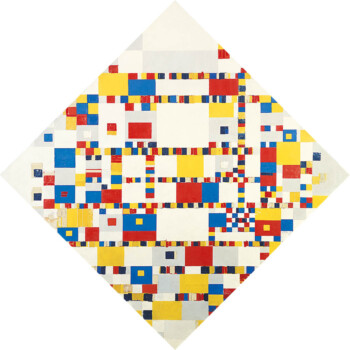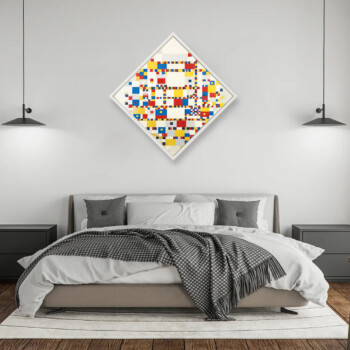Victory Boogie Woogie
Piet Mondriaan (1872-1944) lived in a turbulent time during which two world wars took place. Perhaps precisely because of this, he was always looking for balance and equilibrium throughout his life and in the artistic field. Mondriaan was convinced that art in the right composition and proportions could contribute to harmony in the world. Victory Boogie Woogie stands as the final, incomplete masterpiece of the renowned Dutch abstract painter. Left unfinished upon Mondrian’s passing the 1st of February 1944 in New York, this compelling work was still in progress merely three days before the artist’s death.
Mondrian Socks set of 5
€24,95 Select options This product has multiple variants. The options may be chosen on the product pageMondrian cotton tote bag
€15,95 Select options This product has multiple variants. The options may be chosen on the product pagePlacemat Mondrian
€13,00 Select options This product has multiple variants. The options may be chosen on the product pagePiet Mondrian Victory Boogie Woogie
€40,99 – €391,06 Select options This product has multiple variants. The options may be chosen on the product page
Entartete Art
In 1934, Adolf Hitler decided that there was no room for modern art in the Third Reich. Art that did not comply with National Socialist ideas was labeled as ‘Entartet’. To show the people the moral decline of modern art, the Nazis organized the exhibition ‘Entartete Kunst’ in Munich in 1937, in which 650 modern works of art were displayed. Mondriaan was one of the few foreign artists represented in this exhibition with two works.

To London and New York
Mondrian no longer felt safe in Europe and wanted to go to America. To do this, he first traveled to London in 1938 with the paintings he was working on at the time in a crate. In London, Mondrian became acquainted with the English art world and with the American Peggy Guggenheim, with whom he explored the nightlife. It was not until September 1940 that Mondrian was able to take the boat from Liverpool to America. This was just in time, because not much later his neighborhood in London was heavily bombed.
Ode to freedom
Mondrian flourished in New York. The city did him good. There, in the new world, the artist manages to reinvent himself once again and creates his masterpiece, the Victory Boogie Woogie. Shortly after the war, in 1946, a copy of this painting was exhibited in the Stedelijk Museum of Amsterdam as an ode to freedom. Since 1998, it has found its home within the prestigious collection of the Kunstmuseum in The Hague. Critics have suggested that the painting serves as a captivating reflection of Mondrian’s life and his deep affinity for music, offering a testament to the profound impact that New York had on the artist.
Source: Mondriaanhuis




